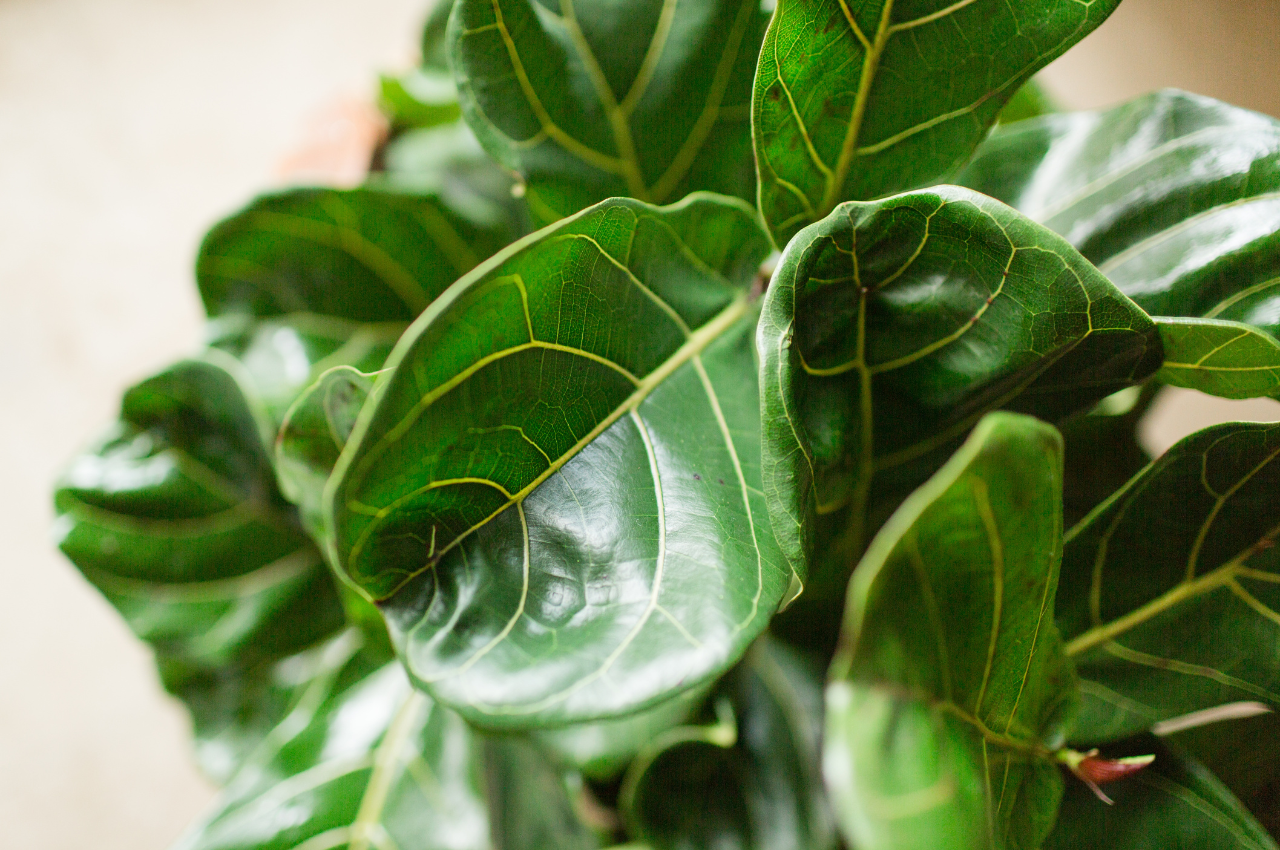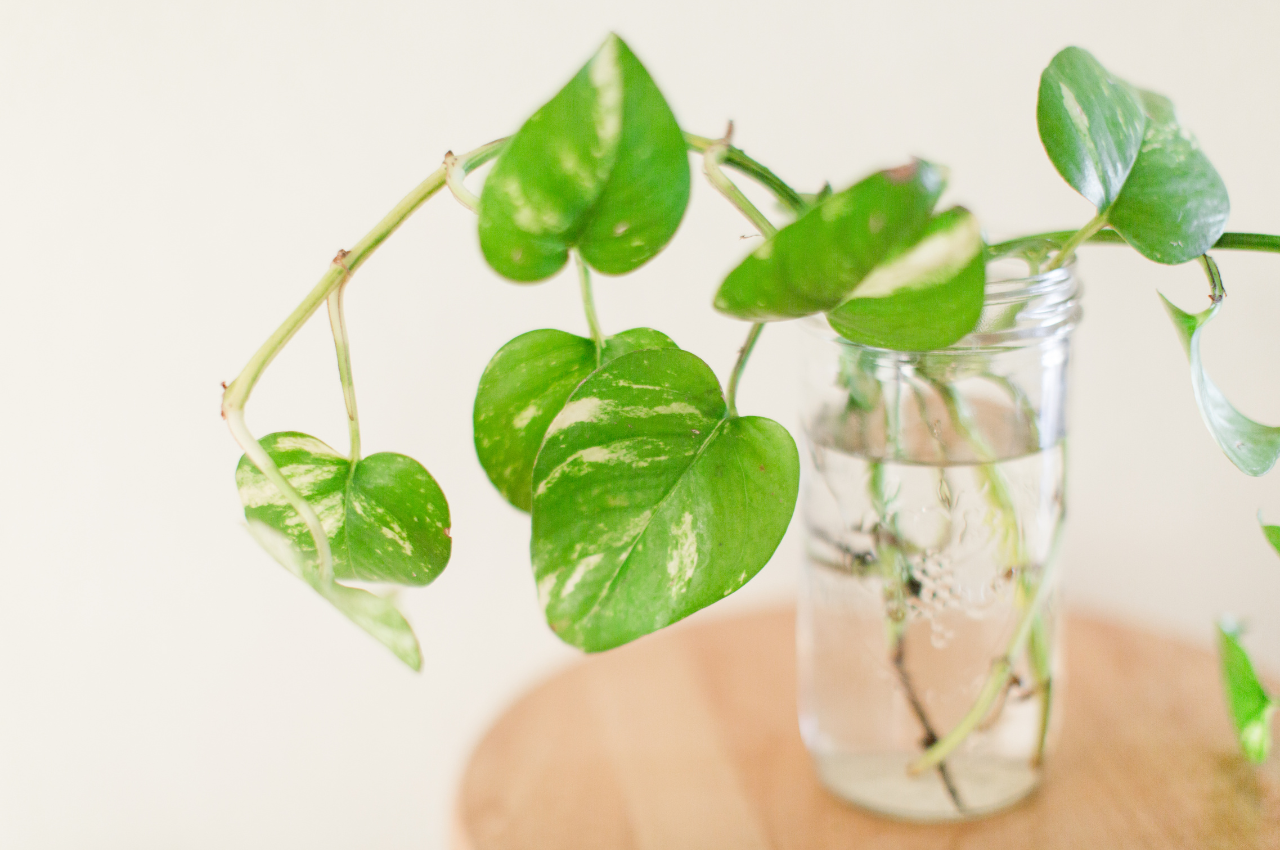Ficus lyrata, commonly known as Fiddle Leaf Fig, is among the most popular houseplants. You’ve probably seen this gorgeous plant already–with its large, fiddle-shaped leaves and distinct silhouette–gracing someone’s content online.
Now, you might be thinking of getting one for your home, and you’re wondering what’s it like to actually to have one at home. Honestly, growing a Fiddle Leaf Fig is not the easiest thing to do. Unlike the Golden Pothos or the Snake Plant, which are low maintenance, this foliage species needs a more specific living condition.
However, with proper care and guidance, you have every bit of potential to make a Fiddle Leaf Fig thrive indoors.
Tips for Growing a Fiddle Leaf Fig
Again, a Fiddle Leaf Fig isn't the easiest plant to take care of. But a healthy and flourishing fiddle leaf will not only make you feel accomplished as an indoor gardener but also elevate the look of your home. These beautiful houseplants are worth the extra love and care, and here are some tips to help you grow a beautiful and healthy Fiddle Leaf Fig.
Light
For optimal growth, Fiddle-Leaf Figs require good access to bright, natural light. But direct exposure to sunlight also burns the sensitive leaves, which means they thrive best under filtered light. This said they won’t be able to grow properly if they are kept in very low light conditions.
Put your Fiddle-Leaf Fig in corners of your space that receive plenty of filtered light, like the living room or a bedroom with large windows. But avoid placing your plant near a window exposed to the sun for most of the day, especially in the afternoon.
Size and Amount of Light
The amount of light your Fiddle Leaf Fig needs to thrive depends on its size. This means the larger your plant is, the more light it needs, and vice versa.
The more leaves a Fiddle Leaf Fig has, the more light it requires to preserve its existing leaves and spur the growth of new leaves. When the lower and interior leaves droop or hang limply, it’s a tell-tale sign that your plant isn’t getting enough light to support all of its leaves.
Light in Winter
Keeping your Fiddle Leaf Fig in front of the window during the winter when natural light is scarce is crucial. But you also must ensure it isn’t exposed to the chilly air from drafts.
If your windows are drafty, place your plant at some distance away, about two to three from the window. Observe how it reacts to this placement and adjust accordingly.
Water
Fiddle-leaf figs enjoy a moderate level of soil moisture. The leaves will wilt and turn a duller shade of green if it doesn't receive enough water. Many novice gardeners make the mistake of overwatering this plant. However, if it gets too much water, it may develop root rot and fungal infection, which is fatal when left unchecked. Other symptoms due to overwatering may also appear, such as leaf drop, yellowing of leaves, and brown spots showing up on leaves.
When the top inch of soil feels dry during the growing season, as in spring to fall, water your Fiddle-Leaf Fig. Water it less in the winter. Water used should ideally be at room temperature. This plant will likely experience shock if fed with hot or extremely cold water, just as it would if exposed to extreme temperatures.
Soil
Fiddle-leaf figs can survive a variety of soil mixtures. But make sure your potting soil drains well since too much moisture leads to root rot and fungal infection. These issues are potentially fatal to any plant, especially to those that are young.
Temperature
Fiddle Leaf Figs thrive in warm and humid conditions, which is similar to their natural habitat. Keep the plants in a space with a consistent temperature of around 65 to 75 degrees Fahrenheit. Temperature below 50°F may not be ideal for their health, causing them to develop certain symptoms like brown patches on their leaves.
Drafts are also a problem for Fiddle Leaf Figs. Keep the windows surrounding the plants tightly shut to prevent drafts. Place them away from air conditioning units, fans, or anything else that produce a rush of air. Excessive exposure to cold temperatures makes their leaves dry, eventually causing them to drop when left unchecked. Moreover, avoid moving your figs unless needed because they are sensitive to abrupt changes.
Maintenance
Although Fiddle Leaf Figs aren't as picky with soil as light, they still need nutrient-rich soil to keep its leaves vibrant and lush. Boost the soil's nutrients with a high-nitrogen fertilizer every once in a while, following label instructions. You can also try making one yourself.
Moreover, you need to prune your Fiddle Leaf Fig every now and then to encourage healthy growth. This entails cutting the damaged leaves so your plant can allocate more nutrients to healthy leaves. You may also need to remove crossing branches because the leaves need ample breathing space to be able to spread beautifully.
When you prune your fig, make sure to cut at least an inch away from the trunk to avoid damaging it. Over time, you may notice little branches sprouting from the cut area. This is one indicator that your plant is healthy and thriving.
Growing a Fiddle Leaf Fig, 5 FAQs

Are Fiddle Leaf Figs Hard to Grow?
Fiddle Leaf Figs are not particularly demanding houseplants as long as you can provide them with adequate lighting, good soil, and ample water.
Keep in mind this species is native the tropical parts of Africa. They naturally thrive in warm and humid conditions, and replicating the Fiddle Leaf Figs’ natural environment indoors can be difficult. The good thing, however, is they are tough plants that can survive less than ideal living conditions for some time.
Will a Fiddle Leaf Fig Grow Taller?
Yes, the Fiddle Leaf Fig can grow taller. When well acclimated indoors, it can reach 6 feet or more, making it an eye-catching statement piece in your home. Certain varieties, however, like ‘Compacta’ and ‘Suncoast’ don’t grow as tall and are typically bushier.
Where Do Fiddle Leaf Figs Grow Naturally?
Fiddle Leaf Fig trees are native to West Africa’s tropical rainforest. They naturally grow under the forest canopy, explaining why they flourish in warm, humid air and a bright environment (but not direct sunlight).
Can I Grow a Fiddle Leaf Fig Outside?
As mentioned previously, Fiddle Leaf Fig “trees” come from the tropical rainforest of Africa. This means they are naturally built to thrive outdoors.
You can grow a Fiddle Leaf Fig outside…as long as you live in a suitable environment. You're good to go if you live in a tropical or semi-tropical area, which is close enough to the species’ natural growing conditions.
But if you live in a colder area, you must keep your Fiddle Leaf Fig indoors for most of the year and only bring it outside in the summer.
Can I Grow a Fiddle Leaf Fig in Water?
The Fiddle Leaf Fig isn’t an aquatic plant. So, growing it in water long-term isn’t ideal. But you could try propagating it in water—allow a cutting to take root in water before transferring it to a pot with soil. ■
Related Articles:



Leave a comment
This site is protected by hCaptcha and the hCaptcha Privacy Policy and Terms of Service apply.